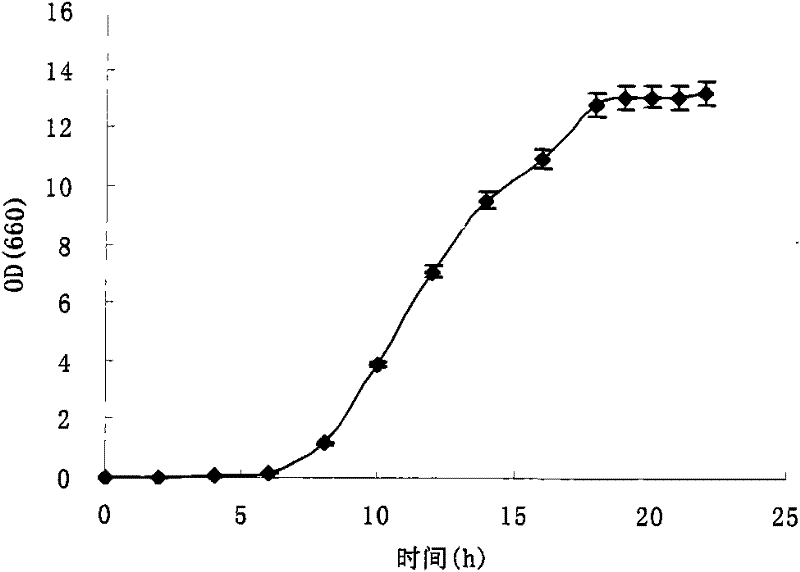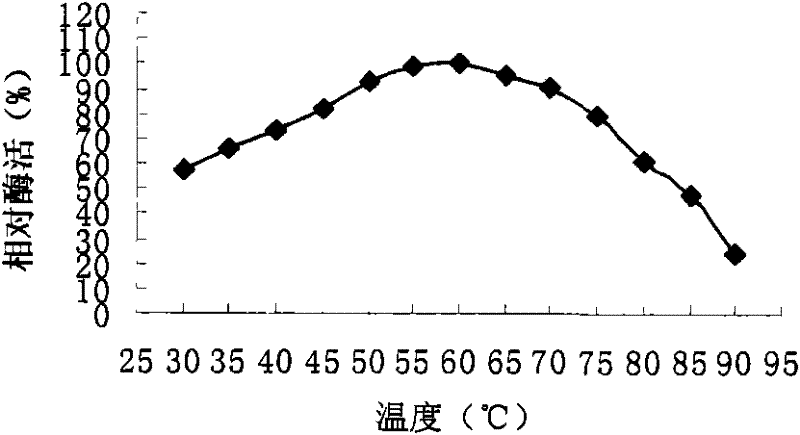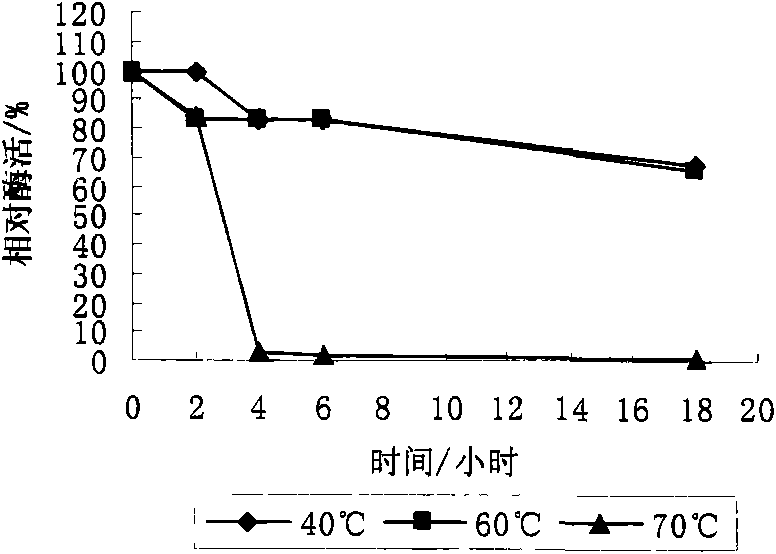Strong-stability moderate-temperature neutral alpha-amylase high-producing bacterium and zymologic property thereof
A strong stability, amylase technology, applied in the direction of enzymes, bacteria, biochemical equipment and methods, etc., can solve the problem that the enzymatic properties of amylase cannot be fully satisfied
- Summary
- Abstract
- Description
- Claims
- Application Information
AI Technical Summary
Problems solved by technology
Method used
Image
Examples
Embodiment 1
[0033] Embodiment 1: Screening of amylase-producing strains
[0034] Primary screening: Dissolve 1g of soil samples around the starch processing plant in 50mL of sterile water, shake well to make a soil suspension, and enrich the spores in a water bath at 80°C for 20 minutes; dilute the soil suspension to different times and take 200μL to spread on On the solid plate of the above-mentioned screening medium, after culturing for 48 hours, pick several single colonies with large hydrolysis circles / diameters for streaking and isolation, and store them in the seed slant medium.
[0035] Re-screening: Shake flask re-screening of several strains obtained from the primary screening. The shake flask medium is the above-mentioned fermentation medium. At 37°C, 250r / min (rotary shaker), culture for 72h, and then measure the enzyme in the fermentation broth live, and the strain with the highest enzyme production was named XLG-1.
Embodiment 2
[0036] Embodiment 2: the mensuration of amylase activity
[0037] The determination of amylase activity adopts the national standard industrial α-amylase preparation method (QB1805.1-93).
[0038] Definition of enzyme activity unit: 1 mL of liquid enzyme, under the conditions of 60°C and pH 6.0, liquefies 1 mg of soluble starch in 1 minute, which is 1 enzyme activity unit, expressed in U / mL.
Embodiment 3
[0039] Embodiment 3: middle temperature neutral amylase enzymatic property
[0040] (1) Effect of temperature on enzyme activity and enzyme thermal stability
[0041] In the same reaction system, the enzyme activity of the amylase was measured at 30-90°C, and the results were as follows: figure 2 As shown: the enzyme exhibits high enzyme activity between 30-85°C, indicating that the enzyme has a wide temperature adaptability range, and its optimum action temperature is 50-70°C. Store the enzyme solution at constant temperature at 40°C, 60°C, and 70°C for different periods of time to measure the residual enzyme activity. The results are as follows: image 3 As shown: 18 hours at 40°C and 60°C, more than 65% of the enzyme activity remains, while only 3% of the enzyme activity remains after 4 hours at 70°C, indicating that the enzyme activity is very stable below 60°C.
[0042] (2) Effect of pH on enzyme activity and acid stability
[0043] In the same reaction system, the en...
PUM
 Login to View More
Login to View More Abstract
Description
Claims
Application Information
 Login to View More
Login to View More - R&D
- Intellectual Property
- Life Sciences
- Materials
- Tech Scout
- Unparalleled Data Quality
- Higher Quality Content
- 60% Fewer Hallucinations
Browse by: Latest US Patents, China's latest patents, Technical Efficacy Thesaurus, Application Domain, Technology Topic, Popular Technical Reports.
© 2025 PatSnap. All rights reserved.Legal|Privacy policy|Modern Slavery Act Transparency Statement|Sitemap|About US| Contact US: help@patsnap.com



